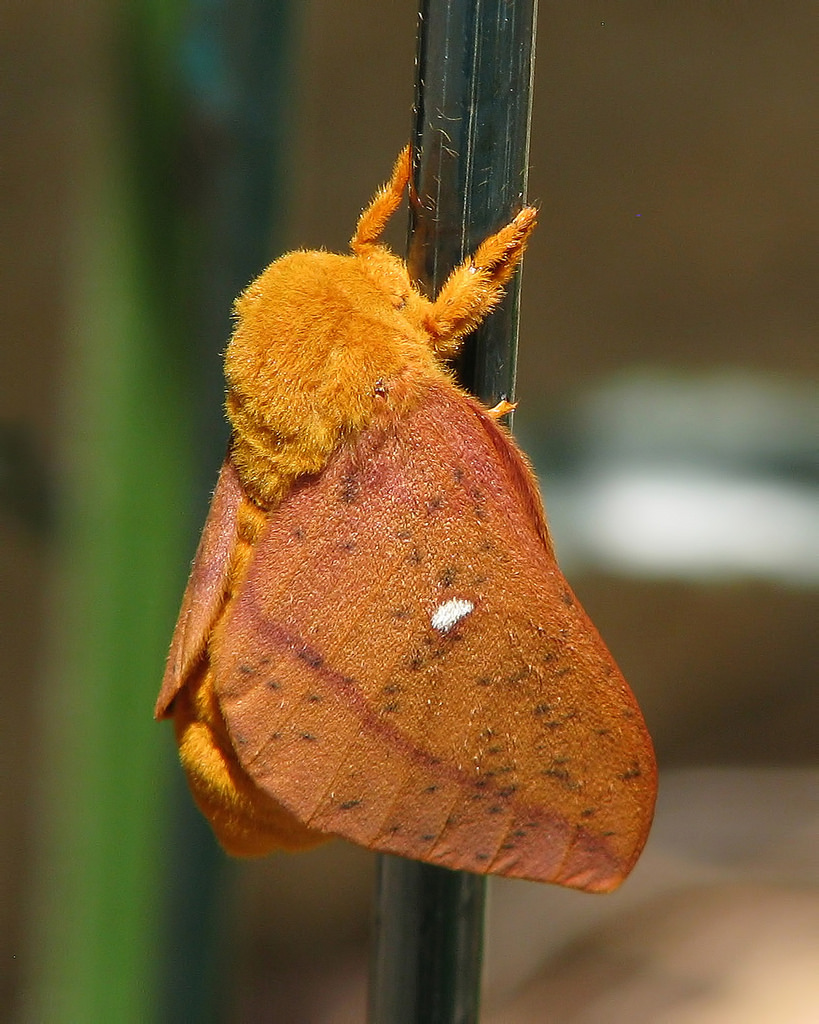This is the third of a four part series on fall tree insects.
Introduction
In fall, while preparing for winter dormancy, many plants shed their leaves in a burst of color. During this period, certain tree insects can be easily identified. The following examines some of the most frequently observed fall tree insects, and how they impact their hosts.
Orange-tipped Oakworm Moth (Anisota senatoria)
Orange-tipped oakworm moth, also referred to as orange-striped spiny oakworm moth, is a defoliator of oak trees. It is native to North America. From late summer to early autumn, the larvae emerge from their eggs to feed on the leaves of oak trees. In the northern part of its range, populations can accumulate rapidly, resulting in periodic outbreaks. When outbreaks occur, the insect can weaken forest and shade trees, rendering them more susceptible to environmental stressors.
Hosts
Orange-tipped oakworm moth primarily infests oak trees. It has also been observed infesting birch, chinquapin, hazel, and hickory.
Symptoms of Infestation
Dense larval populations can severely defoliate host trees. Defoliation over consecutive years can weaken trees, depleting them of their energy reserves. Due to the late period in which the larvae feed, many trees will not be profoundly impacted by the defoliation. By this point in the growing season, most healthy trees will have entered dormancy.
Larvae in their late instars will produce large pellets of frass, which can quickly accumulate, becoming an aesthetic nuisance. The larvae will often wander on sidewalks, furniture, and buildings in search of foliage to devour. With the amount of frass they excrete, this can make them problematic for pedestrians and homeowners.
Treatment
- Due to the innocuous nature of the adults, treatment for orange-tipped oakworm moth is seldom required.
- Maintain tree vigor through sound cultural practices.
- Ensure that trees are sufficiently watered, especially during extended periods of drought.
- Prune out dead and dying branches from trees.
- Inspect vulnerable trees for infections or infestations. If a tree contracts a disease, or is infested by another insect, promptly remedy the problem.
- Leaves that are laden with eggs can be pruned off, and disposed of.
- Apply a layer of organic mulch around the base of susceptible trees to improve the soil quality, moderate the soil temperature, and retain soil moisture.
- Avoid mechanical injuries to trees.
- Orange-tipped oakworm moth is susceptible to various diseases, as well as numerous predators and parasitoids. These natural enemies help to limit larval populations, and are often responsible for halting outbreaks in forested settings.
- Infested trees can be sprayed with Bacilus thuringiensis, a biological pesticide. Applications should be performed 1 to 2 weeks after the eggs have hatched. For this method to be effective, the larvae must be exposed to the pesticide when they are still young.
- Insecticides registered for use in control of orange-tipped oakworm moth can be utilized, although they may eradicate beneficial insects in the area as well.
Pink-striped Oakworm Moth (Anisota virginiensis)
Pink-striped oakworm moth is a species of silk moth in the family Saturniidae. It is notable for the distinct coloration of the adults. The larvae are ravenous feeders. They feast on the branches of host plants, partially defoliating them. When populations are dense, outbreaks can occur. During outbreaks, trees that are weakened or diseased may be further destabilized.
Hosts
Pink-striped oakworm moth generally infests oaks. Birches, maples, and hazel trees are also infested, albeit with less frequency.
Symptoms of Infestation
The larvae are voracious feeders. Large populations can severely defoliate infested oak trees. However, because the larvae feed during fall, most trees will have already begun to enter dormancy. As such, defoliation will have a limited effect on healthy trees. Trees that are already in a weakened state when infested may decline more. Consecutive defoliations can render the tree more susceptible to disease pathogens and insect infestations.
Late-instar larvae will excrete copious amounts of frass. The frass can collect on sidewalks, furniture, and buildings, reducing the aesthetic quality of the environment. The larvae will often wander on sidewalks, furniture, and buildings while searching for plant foliage to consume.
Treatment
- The adult stage of pink-striped oakworm moth does not feast on plant foliage. As such, treatment for the insect is seldom required.
- Maintain tree vigor through sound cultural practices.
- Ensure that trees are sufficiently watered, especially during extended periods of drought.
- Apply a layer of organic mulch around the base of vulnerable trees to improve the soil quality, moderate the soil temperature, and retain soil moisture.
- Prune out dead or dying branches from trees.
- Avoid mechanical injuries to the bark of trees.
- Leaves that are laden with eggs may be removed from the tree, and disposed of.
- Pink-striped oakworm moth has a bevy of natural predators and parasitoids that help to limit its populations.
- Trees can be sprayed in late summer or fall with the biological pesticide, Bacillus thuringiensis. Applications should be administered 1 to 2 weeks after the eggs have hatched, when the larvae are still developing.
- Insecticides registered for use on pink-striped oakworm moth are effective at controlling the insect. However, this method may also harm any beneficial insects that are present in the environment.
Photo courtesy of Vicky DeLoach CC-by-2.0
